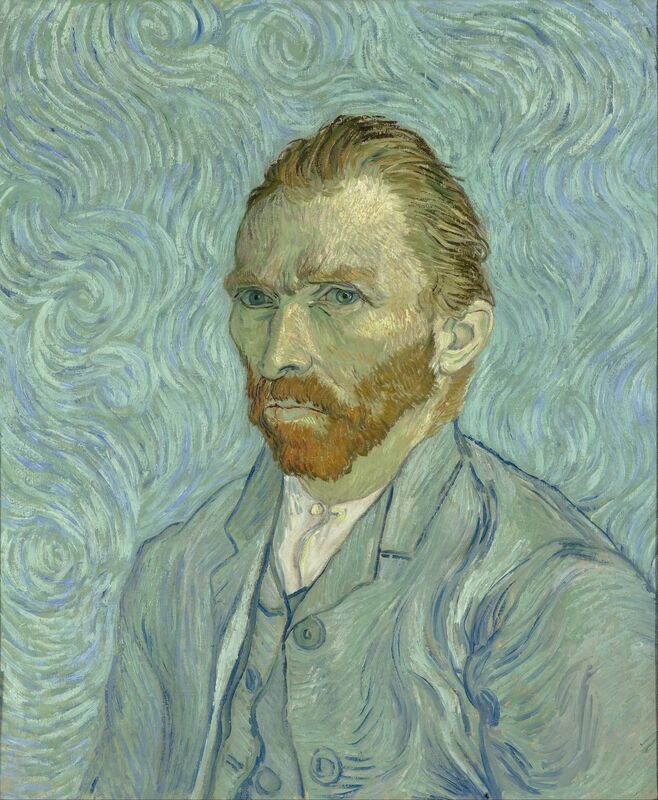17.1.2022 - 28.1.2022
Leong Jiahui
0353469
Bachelor of Design (Honours) in Creative Media
Design Principles GCD60804AC182
Leong Jiahui
0353469
Bachelor of Design (Honours) in Creative Media
Design Principles GCD60804AC182
Visual Research
The simple self-portrait definition is a portrait of an artist created by that artist him- or herself. It can be drawn, painted, sculpted or photographed by the artist. It is considered a representation or an expression of the artist and does not necessarily contain the face of the artist.
fig 1.1 Self Portrait of Vincent Van Gogh
Extra reading :
Idea exploration & description
To start, I have scribbled down some facts about myself to find some inspiration. I've also taken the MBTI test.
 |
| fig 2.1.1 MBTI test result |
 |
| fig 2.2.1 |
| fig 2.2.2 |
 |
| fig 2.2.3 |
The picture above was taken from the anime Blue Period. The artist had drawn reflections of the face to create a stretched, imperfect face with each part being different from another. In this scene, the protagonist had gotten the idea to draw his self-portrait in this way because he dropped and broke his mirror during the exam and was forced to improvise. This had inspired me to draw my self-portrait in the form of broken glass pieces, with each different piece representing a different part of me that will come together to form a complete glass piece.
 |
| fig 2.2.4 |
 |
| fig 2.2.5 |
Progress
 |
| fig 3.1.1 |
 |
| fig 3.1.2 |
 |
| fig 3.2 |
Final Outcome
Pieces of Me
Rationale
Puzzle pieces :
The different coloured puzzle pieces can come together to form a picture. I used that to symbolise how different sides of me, no matter how different, will need to come together to form me. The different colours all represent different emotions I felt towards the events in my life.
- yellow - joy
- blue - sadness
- purple - fear/anxiety
- green - disgust
- orange - annoyance/anger
- pink - love/affection
I'm a relatively calm person, so there are the least amount of orange pieces.
The puzzle is also incomplete, representing how as long as I continue to grow and live life, the puzzle will keep getting bigger.
The missing pieces in the middle represent the values that the current me no longer stand for but was still responsible for shaping who I am today.
The two unconnected pieces at the bottom left represent how the choices I make in life can lead to different outcomes that will ultimately be a part of me.
Photos:
The photo in the main focus is a representation of how I prefer to be viewed - a simple girl who loves her cats. Behind it hides another uglier part of me that's always lurking in the background but usually goes unnoticed unless they pay close attention.
The photo in front represents my love language - physical touch. The sky background represents the freedom I seek and the book paperclip is a nod towards my reading obsession. The yellow shirt represents both my cheerful personality and my favourite colour.
Design:
I chose pastel colours for the puzzles that contrast the photo to emphasize the photo. The puzzle pieces have the element of repetition.
Lecturer Feedback
Mr Charles liked the concept of the puzzle. He suggested I try experimenting with the size of the puzzle pieces as the ones in my sketch were huge.
Reflection
Completing this piece was truly a journey. I've managed to see all kinds of self-portraits during my research and it had completely destroyed my past belief that self-portraits have to include the face of the artist. I'm happy I created a self-portrait that I could see myself in. If I could change something in the piece, it would definitely be to add more puzzle pieces. Perhaps do the colouring more justice if I had more time, too. Overall, I'm satisfied with the final result.
Lecture - 27.1.2022
- feedback session for Project 1
- briefing for Project 2 ( Mr Charles brought us on a virtual road trip to the park! )


Brilliant ideas! the composition and renderings are great! the puzzle concept does unravel or perhaps piece together the entire story or persoinality. You can also explore the concept further to get the puzzles to be actually part of you rather than unravel you. As far as the design principle solution, it is very evident!
ReplyDelete